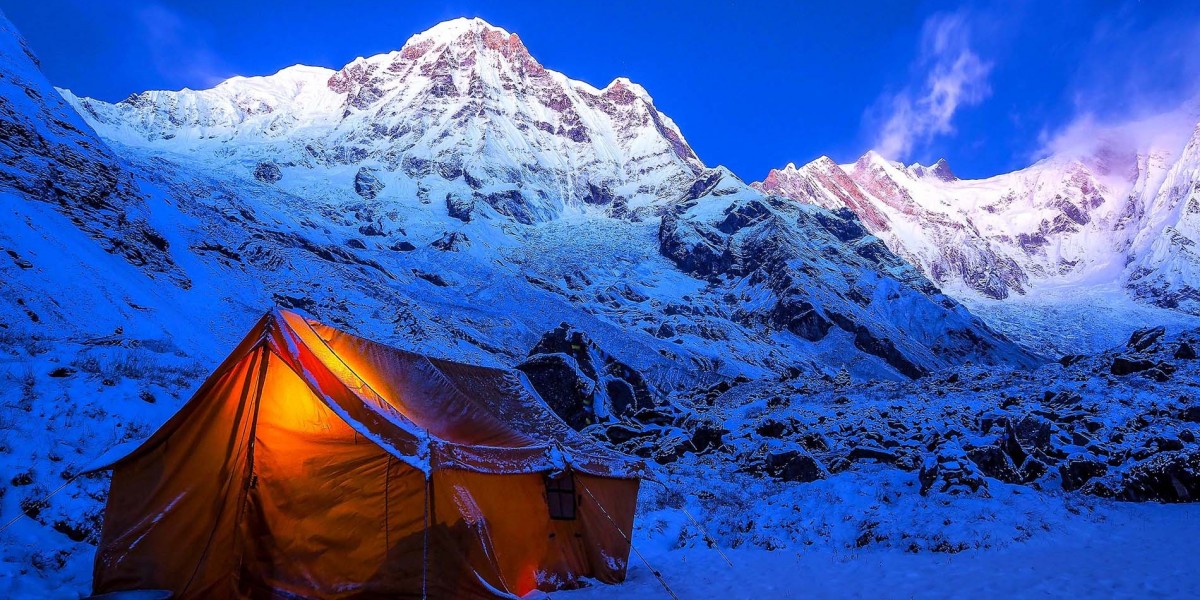The Himalayan nation of Nepal is a paradise for trekkers and adventure seekers from all over the world. The Annapurna Base Camp (ABC) Trek stands out among the region's many trekking alternatives as a classic, providing breath-taking mountain views, varied landscapes, and a window into the local way of life. We will cover all the information you need to know about the Annapurna Base Camp Trek in this in-depth guide, from the specifics of the route to helpful hints for an effective trek.
Route and duration of the trek
One of Nepal's most picturesque cities, Pokhara, serves as both the beginning and end of the Annapurna Base Camp Trek. Here is a summary of the route and the anticipated time:
Pokhara to Nayapul: The trek begins with a lovely drive that takes between 1.5 and 2 hours from Pokhara to Nayapul. You'll begin your adventure from Nayapul.
The first day of hiking involves a leisurely stroll along the Modi Khola river from Nayapul to Tikhedhunga or Ulleri. Depending on your pace, you can either stay at Tikhedhunga or go on to Ulleri. It normally takes 4-6 hours to complete this segment.
Ulleri to Ghorepani: As you climb to Ghorepani, the terrain gets steeper. The breathtaking sunrise views of the Annapurna and Dhaulagiri mountain ranges from Ghorepani are legendary. The journey takes five to seven hours.
You will climb to Poon Hill (3,210 meters) early in the morning to view the sunrise spectacle on your way from Ghorepani to Tadapani. After then, it would take you another 5 to 6 hours to get to Tadapani.
Before arriving in Chhomrong, a lovely village with breathtaking mountain views, you'll travel through picturesque Gurung settlements and rich rhododendron woods on your way from Tadapani. This leg should take four to six hours.
Trekking from Chhomrong to Bamboo involves descending to the Chhomrong Khola and then ascending through thick bamboo woods to Bamboo. Usually, this section takes four to six hours.
From Bamboo to Deurali, the trail ascends steadily and provides more views of the mountains. This leg takes about three to five hours.
The final push brings you to the Annapurna Base Camp (4,130 metres) from Deurali. Three to four hours are needed to travel from Deurali to ABC, and the entire way there are breathtaking vistas.
After witnessing the magnificent daybreak at ABC, you'll retrace your steps and make your way down to Bamboo. Normally, this part takes 6-7 hours.
Bamboo to Jhinu Danda: Jhinu Danda, your final hiking halt before reaching your destination, is renowned for its natural hot springs. The distance between Bamboo and Jhinu Danda is about five to seven hours by foot.
On the last day of your trek, you will hike to Nayapul and then take a drive back to Pokhara to complete the journey. Jhinu Danda to Nayapul and Return to Pokhara.
Authorizations and Rules
You'll require the necessary authorizations before starting the Annapurna Base Camp Trek:
All trekkers must have an Annapurna Conservation Area Permit (ACAP), which is available in Pokhara or Kathmandu. It costs about $30 USD.
TIMS Card (Trekkers Information Management System): For trekking in the Annapurna region, a TIMS card is required. The cost is roughly USD 20 for lone hikers and USD 10 for hikers in scheduled groups.
Throughout the walk, make sure to always have your permits with you because checkpoints can require them.
A place to stay and food
Along the Annapurna Base Camp Trek, teahouses and guesthouses provide simple but welcoming lodging. A bed with blankets and a common toilet are typically included, though the amenities do vary. A sleeping bag should be brought along for extra warmth, especially in the cooler months.
Teahouses serve a range of foods, including Nepali, Tibetan, and foreign cuisines. Trekkers frequently choose Dal Bhat, a typical Nepali dish, for its energising properties. Additionally, vegetarian and vegan choices are available. To avoid contracting diseases transmitted by contaminated water, use bottled or purified water.
The best time to hike
The Annapurna Base Camp Trek can be done at any time of year, but the best times are from March to May and from September to November. The skies are clear, the weather is consistent, and the mountains are very visible during these times. While the autumn season gives lovely temperatures and crisp, clean air, the spring season brings rich rhododendron flowers.
Physical Training and Preparation
Despite being a mild trek, the Annapurna Base Camp Trek has severe ascents and descents. So getting yourself physically ready for the trip is crucial. Build stamina and get your body ready for the demands of the walk by incorporating aerobic exercises, strength training, and endurance activities into your fitness program.
Safety and Altitude Sickness
When climbing to higher elevations, such as the Annapurna Base Camp, acute mountain sickness (AMS) is something to be aware of. It's essential to properly acclimatise by ascending slowly and consuming lots of water in order to reduce the risk of AMS. Learn the signs of AMS, which include headaches, nausea, and dizziness, and seek medical attention if any appear.
Additionally, walking with a group and employing a local guide can improve safety and offer important help in case of crises.
Conclusion
An amazing journey through breathtaking scenery and up-close views of the magnificent Annapurna mountain range is the Annapurna Base Camp Trek. You can go off on this memorable vacation and make memories that will last a lifetime with the proper planning, authorizations, and awareness of safety precautions. On this amazing trek, discover the mystique of Nepal's Himalayas, get in touch with nature, and be inspired by the untamed beauty of the Annapurna region.



